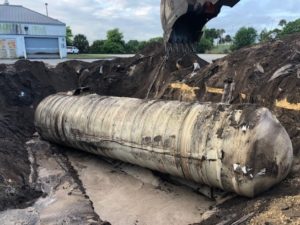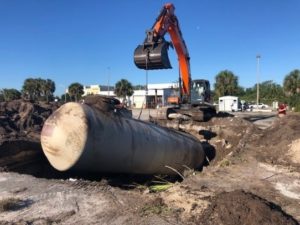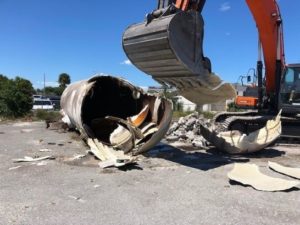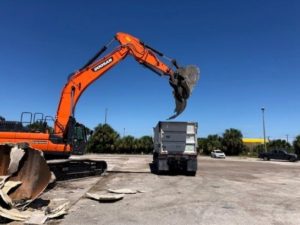

Eventually, all underground storage tanks (USTs) will need to be properly removed or closed in place, depending on the situation. Most often, the tanks are removed from the ground. The process involved with tank removal can be extensive, but MAS and our subcontractors have the experience and knowledge to safely remove the tanks, while ensuring your property stays in compliance with regulatory requirements.
Tank removal involves:
- Removal of product within tanks – Any residual liquids, sludge, and other materials must be removed from the tank.
- Inert the tank – The process of displacing oxygen in the tank with another non-explosive gas, such as nitrogen or carbon dioxide.
- Tank excavation – Removing the soils surrounding the tank and/or associated product lines and dispensers.
- Tank disposal – Disposal of residual product and/or sludge from the tank and possibly cutting the tank into pieces on-site for removal off-site. On other occasions the tank may be transported generally intact.
- Management of Contaminated Soils – During the removal of an UST system, contaminated soil may be encountered. The contaminated soil must be handled and disposed according to regulatory guidelines. State guidelines require that once the tank is removed, soil samples are collected from beneath the tank, product delivery lines, and dispensers. If there is groundwater in the excavation, typically water samples must also be collected.
- UST Closure Report – The typical components of a closure report include soil and, if applicable, groundwater sampling, disposal documentation of UST system, and documentation of any soil disposal.
If the UST is under a building or if the excavation could compromise the structure of a building, the tank may be closed in place. After the tank is emptied, cleaned, and applicable samples collected, the tank is filled with a solid material such as sand, concrete slurry or polyfoam.
Aboveground storage tank (AST) removals follow the same protocol as USTs, but with less invasive removal activities, as the tanks are not located below the ground.


